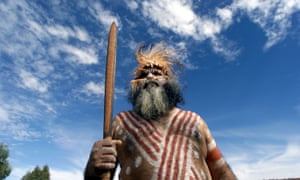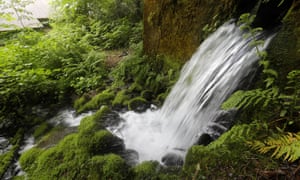Indigenous Australians most ancient civilisation on Earth, DNA study confirms
Clues left in genes of modern populations in Australian and Papua New Guinea enable scientists to trace remarkable journey made by first human explorers
Claims that Indigenous Australians are the most ancient continuous civilisation on Earth have been backed by the first extensive study of their DNA, which dates their origins to more than 50,000 years ago.
Scientists were able to trace the remarkable journey made by intrepid ancient humans by sifting through clues left in the DNA of modern populations in Australia and Papua New Guinea. The analysis shows that their ancestors were probably the first humans to cross an ocean, and reveals evidence of prehistoric liaisons with an unknown hominin cousin.
Prof Eske Willerslev, an evolutionary geneticist who led the work at the University of Copenhagen, said: “This story has been missing for a long time in science. Now we know their relatives are the guys who were the first real human explorers. Our ancestors were sitting being kind of scared of the world while they set out on this exceptional journey across Asia and across the sea.”
The findings appear in one of four major human origins papers published in Nature this week, which together give an unprecedented insight into how humans first migrated out of the African continent, splintered into distinct populations and spread across the globe.
Willerslev’s findings, based on a new population analysis of 83 Indigenous Australians and 25 Papuans, shows that these groups can trace their origins back to the very first arrivals on the continent about 50,000 years ago and that they remained almost entirely isolated until around 4,000 years ago. “They are probably the oldest group in the world that you can link to one particular place,” said Willerslev.
En route to Australia, early humans would have encountered a motley assortment of other roving hominin species, including an unknown human relative who has now been shown to have contributed around 4% to the Indigenous Australian genome. Previously, scientists have discovered that prehistoric couplings have left all non-Africans today carrying 1-6% of Neanderthal DNA.
Willerslev said the latest findings added to the view that Neanderthals and other now extinct hominins, traditionally portrayed as low-browed prehistoric thugs, were “in reality not particularly different” from our own ancestors.
Adding to this picture, a second study found that the advent of modern human behaviours around 100,000 years ago, indicated by cave art and more sophisticated tools, does not appear to have been accompanied by any notable genetic mutations.
“Your genome contains the history of every ancestor you ever had,” said Swapan Mallick, a geneticist at Havard Medical School who led the analysis of the genomes of people from 142 distinct populations.
The study also suggests that the KhoeSan (bushmen) and Mbuti (central African pygmies) populations appear to have split off from other early humans sooner than this, again suggesting that there was no intrinsic biological change that suddenly triggered human culture.
“There is no evidence for a magic mutation that made us human,” said Willerslev.
Chris Stringer, head of human origins at the Natural History Museum in London, said the findings would be controversial in the field, adding: “It either means that the behaviours were developed earlier, they developed these behaviours independently, they acquired them through exchanges of ideas with other groups, or the estimated split times are too old.”
Willerslev’s study also resolves the apparent discrepancy between genetic findings implying that Indigenous populations have been in Australia for tens of thousands of years and the fact that the languages spoken by these populations are only around 4,000 years old. “You see a movement of people spreading across the continent and leaving signatures across the continent,” said Willerslev. “That is the time that this new language has spread. It’s a tiny genetic signature. It’s almost like two guys entering a village and saying ‘guys, now we have to speak another language and use another stone tool and they have a little bit of sex in that village and then they disappear again.”
Aubrey Lynch, an Indigenous elder from the Goldfields area, said: “This study confirms our beliefs that we have ancient connections to our lands and have been here far longer than anyone else.”






No comments:
Post a Comment
Please leave a comment-- or suggestions, particularly of topics and places you'd like to see covered